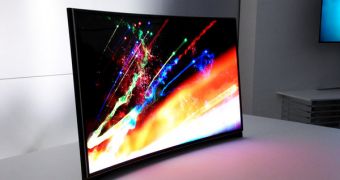Organic Light Emitting Diodes are the youngest consumer display technology, more or less, which is why Samsung is making such a fuss over surpassing the 300 million panel production mark.
Samsung Display Co., LTD. began mass production of OLED panels back in January 2007, and while OLED didn't catch on very quickly, it did gain acceptance, sometimes steadily and sometimes faster.
The most recent edition of the Consumer Electronics Show (CES 2013) had quite a few OLED TVs and monitors on display, among other panel types. There were even flexible models.
What is interesting to note is that it took four and a half years to reach 100 million, but only eleven months for the next 100 million, and just seven months for the third hundred million.
A ceremony to commemorate the 300-million production milestone was held in Samsung Display City in Asan city, in Chungcheongnam-do, Korea. The company president and over 300 other employees attended.
"After six years of nearly constant production, we have achieved a monumental milestone in producing 300 million panels, which represents the vast majority of OLED panels produced during that time," said Kinam Kim, the president and CEO of Samsung Display.
"Samsung Display will accelerate its leadership in OLED production by introducing the next generation OLED technology, including large-sized TV panels and flexible displays."
Currently, Samsung holds 98% of the OLED panel market, though LG has launched some products of this nature as well.
Smartphones, tablet PCs and digital cameras are still the main devices using OLED, but as we have said above, TVs are adopting it as well now. The costs associated with rendering it into such large form factors will put off most people but, nonetheless, the products have gathered a small group of buyers.
The next 100 million shipments should take less than 7 months to ship this time.

 14 DAY TRIAL //
14 DAY TRIAL //